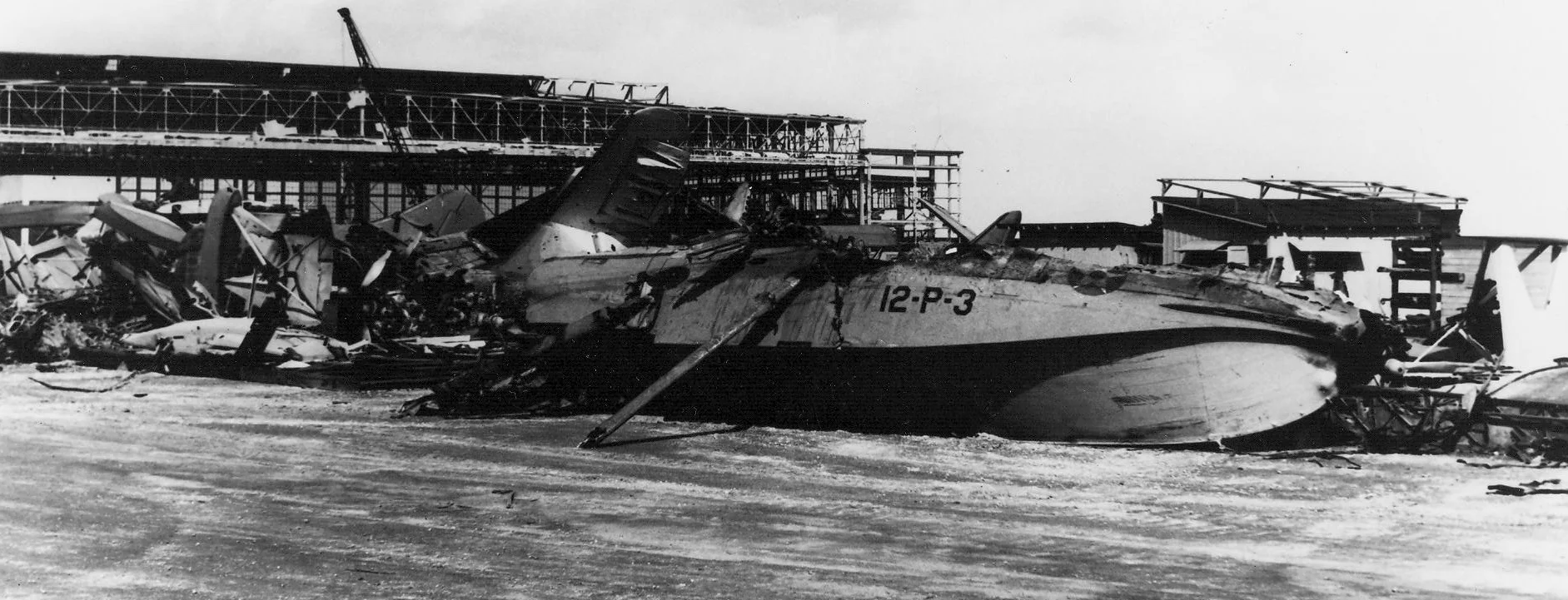No One Avoided Danger: NAS Kaneohe Bay and the Japanese Attack of 7 December 1941. J. Michael Wenger, Robert J. Cressmen, and John F. Di Virgilio. Annapolis, MD: Naval Institute Press. 2015.
There have been many accounts of the Japanese attacks on Hawaii on 7 December 1941. Nearly all of them focus on Pearl Harbor. Other military installations on Oahu also suffered on that day. Danger tells the story of how the Japanese delivered their attack on Kaneohe Naval Air Station (NAS), and how the sailors and marines responded.
No One Avoided Danger begins with the months and days leading up to that fateful day in 1941. Kaneohe NAS was still under construction, a fact that would prove significant once the attack was underway. The base was not fully staffed, not all the buildings were complete, and not all squadrons had received the full complement of planes. Although a significant number of planes and buildings were destroyed, the loss could have been much worse.
The short book is rich in detail, offering insight on the participants on both sides. Personal anecdotes by surviving men, and about those who died fighting, offer insight into the lives of those who tried to defend their base. The authors gained access to Japanese archives for information on the Japanese pilots and the aircraft in each wave, as well as some personal accounts by the pilots during their attack. It is refreshing to hear from “the other side” in narratives of war, something sadly lacking in earlier accounts of 7 December. Finally hearing from the Japanese themselves gives the story more dimension. Most of the detail, however, is reserved for the narratives of the US servicemen, and how they fought to fend off their attackers using limited resources. Like other accounts of the day, the men were caught off guard, with many assuming the attack was a training exercise. American servicemen give first-person narratives of what they experienced, and they read much like any recollection from 7 December. The chaos of the aftermath, with the men regrouping, preparing for additional attacks, and battling rumors, concludes the account.
U.S. Navy sailors attempt to save a burning Consolidated PBY Catalina flying boat at Naval Air Station Kaneohe Bay on 7 December 1941. This plane was set afire by strafing in the the initial phase of the attack and was sunk in a later strike. Note dog observing the work. (U.S. Navy Photograph)
Unfortunately, Danger does not offer much in the way of new insight into the attack on Hawaii. In the seventy-four years that have passed since the attack, most of the information has been uncovered, and nearly all of the witnesses have died. By writing the Kaneohe story, the authors contribute to the overall narrative of how Japan wanted to completely disable and destroy any U.S. presence in the Pacific. This was evident in the near simultaneous attacks on Hawaii, as well as the Philippines, Wake Island, and Guam. As at Pearl Harbor, the Japanese were successful in destroying much of the equipment on the ground and in the bay. NAS Kaneohe was significant due to its fleet of PBY Catalina aircraft, used as spotters and anti-submarine planes throughout the war.
The book is full of never-before-published photographs of the base from both sides, personal accounts from U.S. servicemen as well as Japanese pilots, and the destruction left behind after the attack. No One Avoided Danger would be a good addition to any library, for scholars and casual enthusiasts alike, if only to complete the picture of all the attacks on 7 December.
Brandee Leon is a student of counter-terrorism and international relations. Her main area of focus is terror in Europe. She writes for The Bridge and The Eastern Project.
Have a response or an idea for your own article? Follow the logo below, and you too can contribute to The Bridge:
Enjoy what you just read? Please help spread the word to new readers by sharing it on social media.
Header image: Aircraft wreckage and a badly damaged hangar at Naval Air Station Kaneohe Bay, Oahu, shortly after the Japanese air attack. (U.S. Navy photograph)


